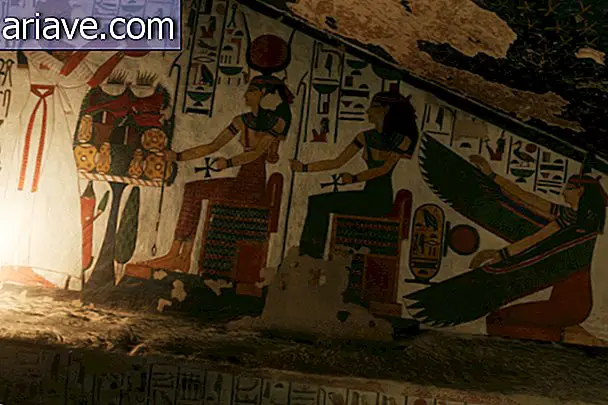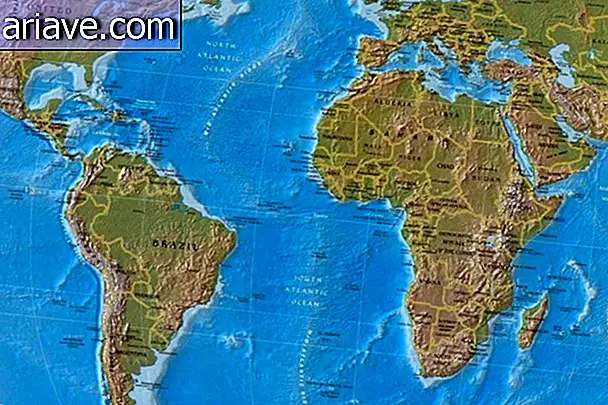Historical Drops # 35: Your weekly dose of history!
How evolved would mankind be if at some point no one had discovered fire or found a way to pipeline water and control some of the great forces of nature?
Thanks to a good deal of people duly immersed in curiosity, man has been able to transform the curve of history and, by studying the past, find ways to better lead his future. This week, column # 35 of our Historical Drops features some of these inventors. Howard Carter, Edmond Halley, and Thomas Edison were three such curious researchers who helped identify important issues in anthropology, archeology, astronomy, and more.
How about knowing a little more about your inventions and discoveries? Come with us!
November 26th
1922: Tutankhamen's tomb is discovered

British archaeologist Howard Carter devoted his life to exploring the culture of ancient Egypt. At 17, he was already a member of the Egyptian Exploration Fund, contributing research on the Middle Kingdom. In 1922, he was largely responsible for the discovery of one of the most important relics of the African country: the tomb of Emperor Tutankhamen.
Financed by aristocrat Lord Carnarvon, he was the first person to set foot on the tomb of the world's most famous mummy, on November 26, 1922. The following year, the burial chamber opened, revealing a rich quartzite sarcophagus, where it rested. Teen Pharaoh.
November 27th
1985: Halley's comet passes through Earth

Discovered by Edmond Halley in 1696, the most famous comet known on Earth reached its closest point to the planet on November 27, 1985.
Halley, whose standard path is the orbit around the sun, takes between 74 and 79 years to pass through the earth, so one can see it twice in life.
Halley was described in the Synopsis of Comet Astronomy, by the author of the same name, in 1705, but is estimated to have traveled the planet since the 2nd century BC. On the 27th, he reached his shortest distance from Earth in the period: 93 millions of kilometers.
November 28th
1958 and 1960: French Colonies Become Independent

Since 1504, like Portugal, Spain and England, France has also aimed to expand its borders through colonization and exploitation of land in the Americas, Africa and Asia.
In the five centuries since then, dozens of countries have come under French command, so some of the colonies only lost their status less than 50 years ago.
On that day, November 28, 1958, Chad, the Republic of Congo, and Gabon became autonomous republics with respect to their European colonizer. Two years later, it was Mauritania's turn to declare itself an independent country.
November 29th
1877: Thomas Edison and his phonograph

In the 19th century, the mere possibility of a device capable of recording and reproducing sounds was mind-blowing - something that Thomas Edison particularly liked to do with people.
Even before he could revolutionize the history of technologies by developing the light bulb, he refined technologies that were in progress and developed a phonograph.
On November 21, 1877, he announced his invention, and on November 29, he made his first public demonstration of the object, which was supposed to be a groove cylinder covered by a tin foil. A sharp point pressed into the cylinder so that the vibrations of the object generated sounds.
30th of November
1986: Earthquake in Brazil

Earthquakes aren't exactly common in Brazil, are they? Since it is not over any major cracks in the planet's tectonic plates, at least of that evil the country is free. However, that does not mean that they never happen. Eventually, some earthquakes are recorded, but the vast majority do not reach large scales.
One of the examples that comes out of the box was the 5.1 degree earthquake at the Richter Scale that, in 1986, hit the town of João Câmara, in Rio Grande do Norte.
After observing minor aftershocks in August and September, the city felt at 5:19 am a seismic shock so large that most of the people living in the area left for safety. At the time, more than 4, 000 buildings were damaged or destroyed.
1st of December
1822: Pedro I is crowned Emperor of Brazil

After proclaiming the independence of the country from Portugal, on September 7, a little less than 3 months later, on December 1, Dom Pedro I was also crowned the First National Emperor, continuing the monarchical system that already appeared. over here.
The decision was quite obvious, as he was the most likely representative to command Brazil at the time, but Dom Pedro I was also a leader who tried to maintain national unity despite popular dissatisfaction stemming from centuries of Portuguese exploitation and conflict. places that tired the population.
His reign lasted 9 years, until he abdicated the throne on April 7, 1831, when he left for Europe and left his government in the power of his son, Pedro II.
December 2
1512: First Exposition of the Sistine Chapel

Named after the religious who commissioned it, Sixtus IV, the Sistine Chapel is where Cappella Magna used to be. Inspired by the Old Testament Temple of Solomon, it was entirely decorated by renowned Italian Renaissance artists, with names such as Michelangelo, Raphael, Botticelli and Perugino on the list of painters who contributed to its completion.
Composed of frescoes depicting the life of Christ and that of Moses, it rescues moments of Christianity from before the birth of Jesus. It is one of the most important works of art in the world and is located in the Vatican.
Now open to the world for visitation, the Sistine Chapel was presented to the general public on December 2, 1512, just over 30 years after its construction was completed. During this period, the paintings that make up the decoration of the place were made, as well as the finishing, such as the windows and other ornaments.











